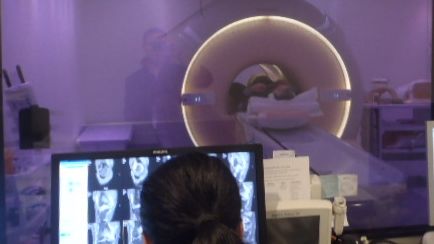Safe Environments were engaged to undertake a preliminary noise survey at a medical centre to the south west of Sydney. The purpose of the preliminary noise assessment was to assess the noise that was being produced by a new piece of medical equipment, an MRI. MRI is an acronym for Medical Resonance Imaging (MRI). The medical device uses powerful magnets and radio waves which provides images of the body.
There were concerns as the noise level of the medical equipment and a noise survey was conducted. The concern was of the diagnostic staff who work with the patients and move in and out of the room on a regular basis. While this appears to be a simple process of measuring the noise levels, the problem was that no metal objects can be in the same room as the MRI. This is due to the powerful magnets that may pull away any metal objects and pose a hazard.
During the operation of the MRI the staff are to wear hearing protection, however the main concern of the noise was the extended period of time that the health practitioners may have been exposed to whilst being within the control room. To assess the noise levels within the control room a couple of dosimeters were used.
The dosimeters were decided to be used to provide the overall daily noise exposure that is likely to be anticipated over the day. The graphical log was also able to identify periods where the noise was perceived to be higher than usual. It was explained that some certain scans would provide a higher noise levels, therefore the noise survey should be taken over the length of an entire day, rather than just over a scan or two.
There consideration that the staff could wear the dosimeter within the control room and then take them off before entering the MRI room. This however was decided against as there was a high risk that the staff may forget to take the dosimeter off before entering the MRI room again.
The results of the dosimetry provided evidence that the noise, whilst being perceived as being high by the workers, was well below 80 dB(A) over the length of a shift. This indicates that no additional controls were required to be put in place and Personal Hearing Protection (PHP) was not required.
The end result was that the workers were now happy to know that the noise levels that they are exposed to within the control room will not be detrimental to their hearing and that this has been documented to show that the control room have noise levels below the NSW workplace health and safety exposure standards.
Please contact Safe Environments for more information on noise surveys to assess your workplace is compliant with noise exposure levels.
Author: Carl Strautins

Email: Carl@SafeEnvironments.com.au
Carl Strautins is a managing director of Safe Environments Pty Ltd a multi-specialist consultancy operating in the building, construction and property management industries. He provides the necessary guidance and risk minimisation strategies required by architects, construction companies and facility managers to ensure they mitigated their risk to property risk. He is engaged on a regular basis to provide expert opinion for disputes and legal proceedings. Click here to know more about him.


